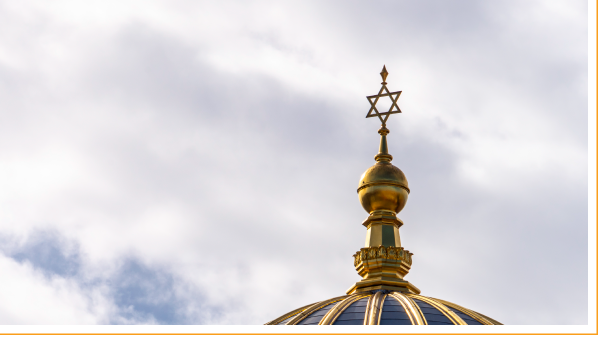Rabbi Andrew M. Paley | Temple Shalom, Texas, USA
 Hanging in my office is a framed verse from this week’s Torah portion, Terumah – “They shall make a sanctuary for Me, and I will dwell in them”. (Exodus 25:8)
Hanging in my office is a framed verse from this week’s Torah portion, Terumah – “They shall make a sanctuary for Me, and I will dwell in them”. (Exodus 25:8)
This sentence is the exclamation point to a series of commands given to the Israelites at Mount Sinai to build a unique structure – the Mishkan – the portable desert sanctuary – the institution the Israelites will use to come close to God. This Torah portion and many that follow give painstaking detail about how to build it, what materials to use and what it will look like. Finally, we are given the purpose of the Mishkan; so that God may dwell in them.
Rabbi Jonathan Sacks teaches, “The Jewish mystics pointed out the linguistic strangeness of this sentence. It should have said, ‘I will dwell in it’, not ‘I will dwell in them’. The answer is that the Divine presence lives not in a building but in its builders; not in a physical place but in the human heart. The sanctuary was not a place in which the objective existence of God was somehow more concentrated than elsewhere. Rather, it was a place whose holiness had the effect of opening the hearts of those who stood there to the One who was worshipped there.”
In our day, in the absence of the Temple, we live out the building of the Mishkan in our own homes as a fulfillment of the vision of Ezekiel who wrote, “This is what the Sovereign Lord says: Although I sent them far away among the nations and scattered them among the countries, yet I have become to them a small sanctuary [mikdash me’at] in the countries where they have gone’ (Ezek. 11: 16). Wherever we gather now in the service of the Divine, there God can be found, there God can dwell among them. It can be construed as Rabbi Sacks further teaches, that, “…the purpose of the building of the Sanctuary as described in the Torah wasn’t the building of the sanctuary per se, but rather the bringing of God’s presence to our world.”
Perhaps, then this is what we have been created to do. Let us, we pray, be made into a sanctuary in order that we provide the space for God’s presence to be felt in this world. Where there is no one present to care let us be the presence of caring and concern. In places where there is no hope, let us be the hope for the downtrodden and forgotten and those on periphery. Where there is no love, let us bring the love to those whose hearts and bodies are broken. Where people are scared and filled with anxiety, may we bring calm and patience they need. Wherever there is a cry for help, let us be that help.
Let us always remember that as a people, we will always need a place to convene, a place to gather, a place to learn and a place to pray. Our synagogues have always been that place for re-souling our souls, for re-charging our charge, for re-energizing the spirit energy we need to bring shalom to those in need.
Be mindful of the fact that the synagogue is not the place to do all these healing, hopeful, caring things, it was and remains to this day the place where we go to get the energy to do those things out in the world; the place to reconnect with our family, to be supported in our efforts, to be nurtured by their presence, to gain strength knowing there are those with whom we are doing this sacred work. That’s why the desert Temple was portable. Because it was needed to recharge you in the field, wherever that is, in order to support you doing the work of the sanctuary. Without the Temple, the Jewish people will lose its way. The Temple has never been as important as it is right now, and the world needs us to be the sanctuary now more than ever.
Amen.
The views and opinions expressed in this article are those of the author(s) and do not necessarily reflect the official policy or position of the World Union for Progressive Judaism (WUPJ).
